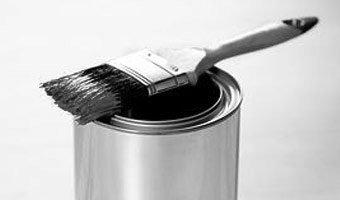
What tools do I need?
Unlike wood building projects, wood finishing requires only a few tools. We’ve outlined the basic tools you’ll need to complete your next finishing project safely.
Safety Equipment
Gloves: Protect your hands from chemicals with gloves. If you’re using non-toxic products like stains and most finishes, a simple pair of latex or vinyl gloves will do the job just fine. If you’ll be working with chemicals like strippers, use gloves made specifically for working with strong chemicals, such as nitrite gloves.
Safety goggles: Protect your eyes by wearing safety goggles or glasses when finishing.
Dust mask or respirator: If you’re using harsh solvents, it’s a good idea to use a respirator. A dust mask is usually sufficient if you’re not stripping or spraying on your finish. Always, always read product warnings and directions before starting your project.
Drop cloths: Even if you’re working in your shop or garage, you’ll want to protect the floor with a drop cloth.
Fan: Keep your work area properly ventilated with fans.
Just in case kit: This kit includes a telephone, first aid kit, eye wash and a fire extinguisher.
Sanding
Orbital sander: Some refinishers choose to sand everything by hand, but we think that using an orbital sander for all but the final sanding is just fine.
Sandpaper: You’ll need a few different kinds of sandpaper for your project. Start with the coarsest sandpaper and move to the finest. We recommend using 80-grit, 120-grit and 180-grit or higher for a smooth finish.
Sanding block: Wrapping your sandpaper around a small piece of wood makes application much easier. Many wood finishers choose to line their sanding blocks with cork for comfort.
Special sanding tools: Depending on your project, you may want to use special tools like sanding cords for removing finish from crevices or teardrop sanding blocks.
Stripping
Scraper: Use scrapers to remove loosened finishes. Some scrapers come with different sized heads to reach detailed areas.
Chemical strippers: As a rule of thumb, the safer the stripper, the longer it takes to remove the finish. Be sure to use the stripper that’s best for your workshop and always read the directions carefully before using the product.
Application
Lint-free cloths: Many finishers prefer applying stain and some finishes with a lint-free cloth. You will also need these cloths when wiping off the excess stain. Lay the rags out to dry or submerse in a metal can filled with water before disposing. Rags wet with oil-based products have been known to spontaneously combust. Follow local regulations for disposal of used rags, brushes and other materials.
Natural bristle paint brush: Use a good quality natural bristle brush for oil-based applications.
Synthetic paint brush: Use a synthetic paint brush for applying water-based finishes.
Foam brush or paint pad: Both provide a smooth finish and no clean-up.
